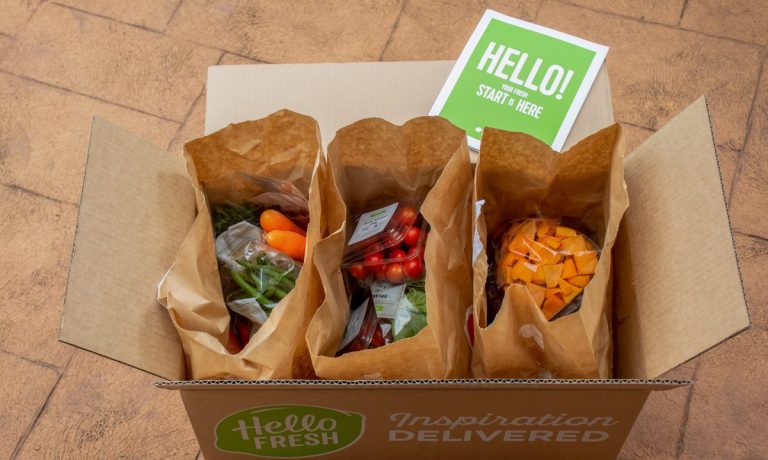
Demand for subscription boxes filled with all sorts of retail products became ubiquitous during the pandemic in 2020 and have remained hot ever since, but there are signs that a leveling off may be ahead.
Consumers who signed up for subscriptions at the beginning of the lockdown may soon be looking to cut expenses, return to stores and end the hassle of managing multiple subscriptions, according to the September 2021 Subscription Commerce Conversion Index done by PYMNTS in collaboration with sticky.io.
See also: 61M US Consumers Have at Least One Retail Subscription
At the same time, bottom-performing subscription brands are adopting features more commonly offered by top performers. This may be an effort to allow their customers to adapt to changing circumstances without ending subscriptions.
“I think it may have plateaued for merchants whose platforms don’t provide the enhanced capabilities to provide deeper, more sophisticated information from which they can then repackage or provide different types of flexibility,” Brian Bogosian, president and CEO of sticky.io, said in a recent interview with PYMNTS.
Going Omnichannel
From his vantage point at sticky.io, the front-end experience used to separate top performers from the rest but now are becoming must-haves in the subscription commerce feature set. Bogosian said subscriptions should be omnichannel, with consumers subscribing to things and either picking them up in-store or getting them delivered. Consumers would then be able to make that choice based on their need for the timing of the delivery of that item.
Read more: Merchants Fight Subscription Fatigue With New Features, Flexibility
One of the observations in the recent study was that consumers with retail subscriptions are letting them go because they want to buy those products in the store.
Making subscriptions omnichannel may present a technical challenge, but it’s better than just cutting the subscription ties with that consumer. There’s another benefit as well: “I think there’s ways of getting people to become more aware of other options, alternatives and bundles as we get to know more and more about the consumer,” Bogosian said.
Providing Flexibility and Value
Another key, he said, is the merchant’s ability to offer tools that give customers the flexibility to change frequency, put it on pause or swap out products.
When there are restrictions or complexities around making changes, consumers are more likely to end their subscription. The old methodologies of payment providers that do merely the rebilling without providing other abilities will run their course.
“I think it’s going to be the challenge of these merchants to be able to provide flexibility and value for consumers in order to prevent more subscription churn,” Bogosian said.
He anticipates that there will be a macro service that will use connectivity and application programming interface (API) integrations to allow consumers to manage all their subscriptions in one place. It gets complicated to figure out where to go to alter each one, he noted.
In the meantime, Bogosian said, “Some of the ways that some providers mitigate that issue are being able to text and saying, ‘You have a new one coming up. Click here if you want to change or alter.’ So, they make it really convenient and easy to make changes.”
Tying Into Consumers’ Wants
When consumers are given the ability to swap out the products they initially subscribed for with something else because they’re getting fatigued with the first product, a merchant would be wise to suggest swaps based on information they have about that customer. That requires another feature that’s becoming a must-have: personalization information.
Subscription merchants want the ability to gather this data when a customer is on the website. More data enables merchants to tailor their offerings to consumers.
See also: 45 Pct Of Gen Z Subscribers Used Only D2C Subscriptions In Q2 2021
The visibility and the things merchants can do online can provide much more engagement with consumers. Bogosian noted that a consumer in a brick-and-mortar store might walk straight to the product they need, grab it and leave. Online, the merchant can make them more aware of other options.
As consumers decide whether to keep a subscription, that personalization can be key. “It really depends on how the merchant is tying into the needs and wants of that consumer,” Bogosian said.
Using the Data That’s Available
Great analytics and reporting are other must-haves for today’s subscription merchant. This includes information about results by product, geography and type of customer.
“All of these things matter and I think that merchants can do well by using the data that’s available there and then having the flexibility to provide these offers that are going to resonate mostly with those consumers,” Bogosian said.
Equipped with these features, subscription merchants can better serve their customers and overcome the leveling-off that others may be seeing.
Still More Upside
Bogosian said he does not believe there are categories in which the interest in subscription commerce has plateaued. He said there is still more upside even in those that started the earliest and are most mature, such as health and wellness. There’s also great traction being found by startups.
What makes the difference between gaining traction or plateauing is whether a subscription merchant provides great packages of services and products as well as flexibility so that consumers can make changes and adjustments.
“Consumers at the end of the day vote with their feet and they will stay or they’ll leave on the basis of what they perceive to be the value,” Bogosian said. “I think the [subscription merchants] that they stick with are the ones that do provide the value, flexibility and tie into what they’re really looking for.”